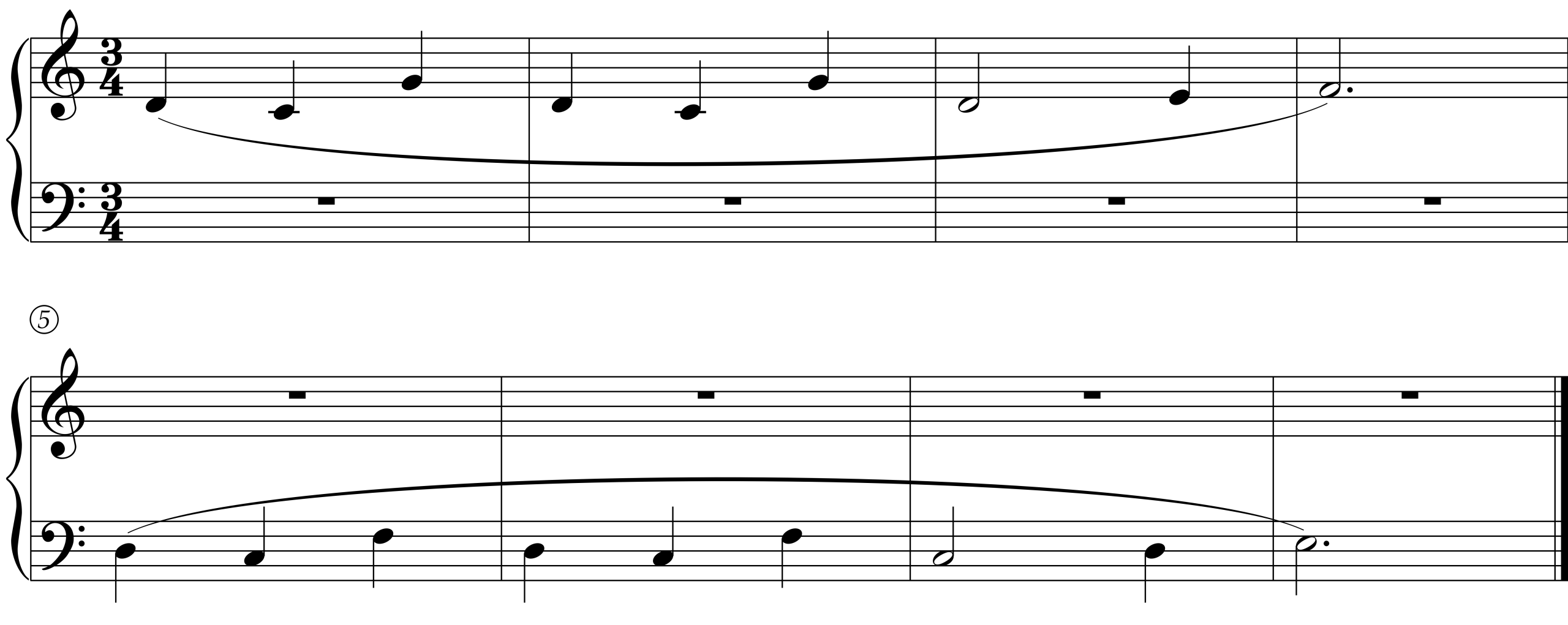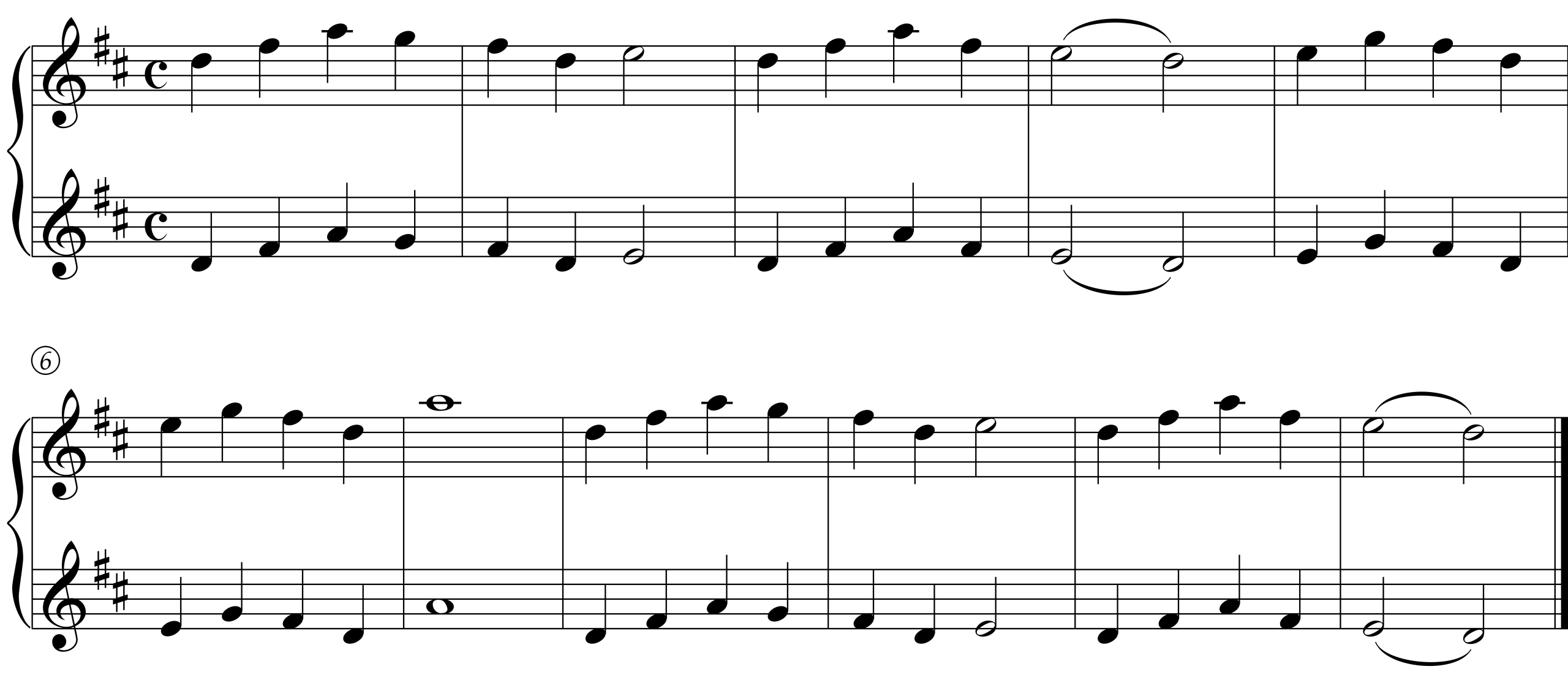18 Sight-Reading
Sight-Reading Tips
- Check the key signature, meter, and clefs
- Preview the excerpt:
- What patterns do you see?
- Are there position shifts?
- What finger(s) should you start on?
- Count the rhythm and tap it in your lap or on the keyboard lid
- Use both hands, tapping each for its own part and both together when appropriate
- Set a metronome to a slow tempo
- Don’t stop if you make mistakes—keep going!
- After your first read-through, identify any mistakes and read it again
After reading through these excerpts, transpose them to other keys. Mark your progress in the checkboxes below each excerpt. Sight-reading excerpts without attributions were composed by the author.
18.1


18.2

Cornelius Gurlitt: Etude Op. 82, No. 1

18.3

Cornelius Gurlitt: Etude Op. 82, No. 2

18.4


18.5

Cornelius Gurlitt: Etude Op. 82, No. 3

18.6


18.7

Cornelius Gurlitt: Etude Op. 82, No. 4

18.8

Cornelius Gurlitt: Etude Op. 82, No. 5

18.9

Cornelius Gurlitt: Etude Op. 82, No. 6

18.10

Cornelius Gurlitt: Etude Op. 82, No. 7
